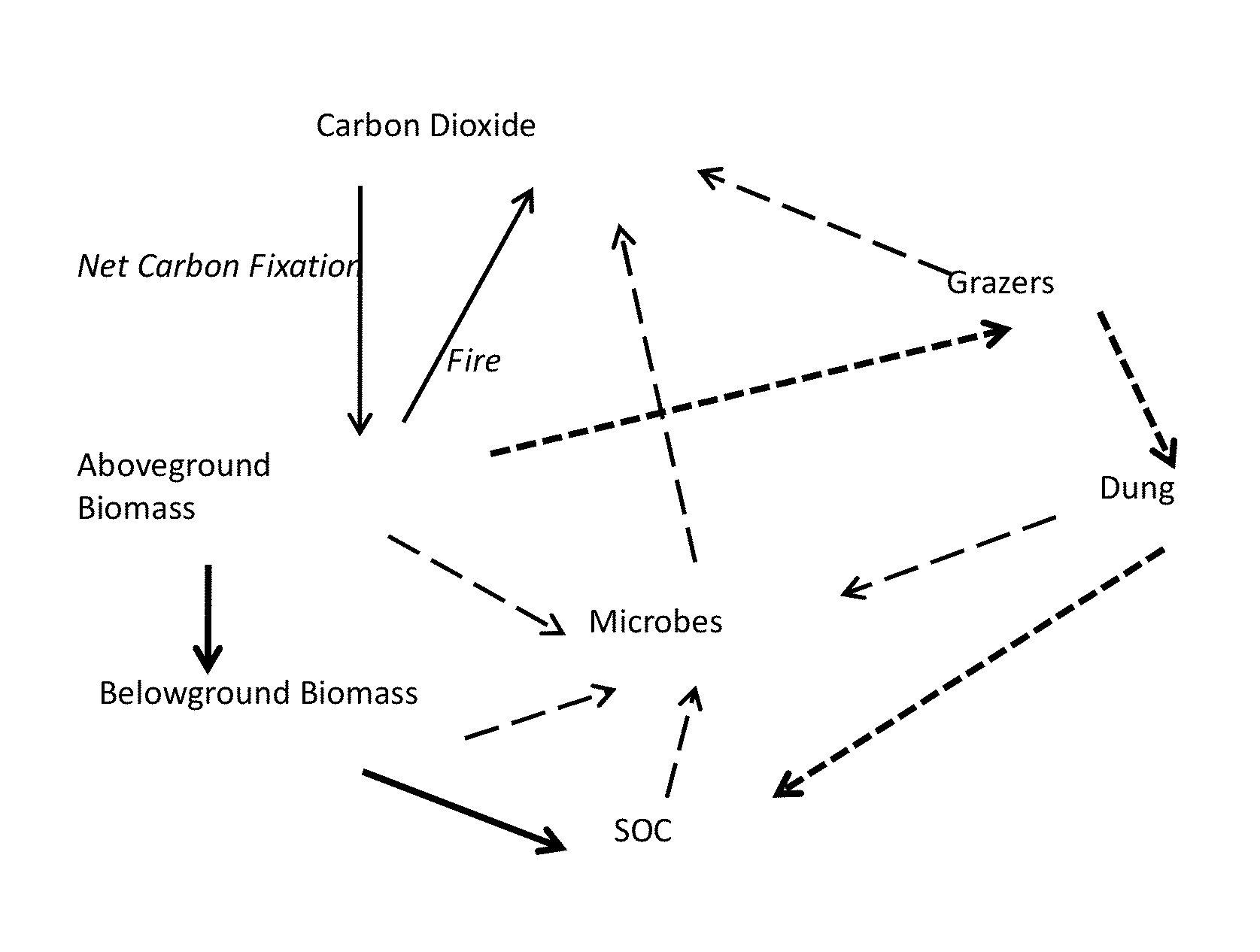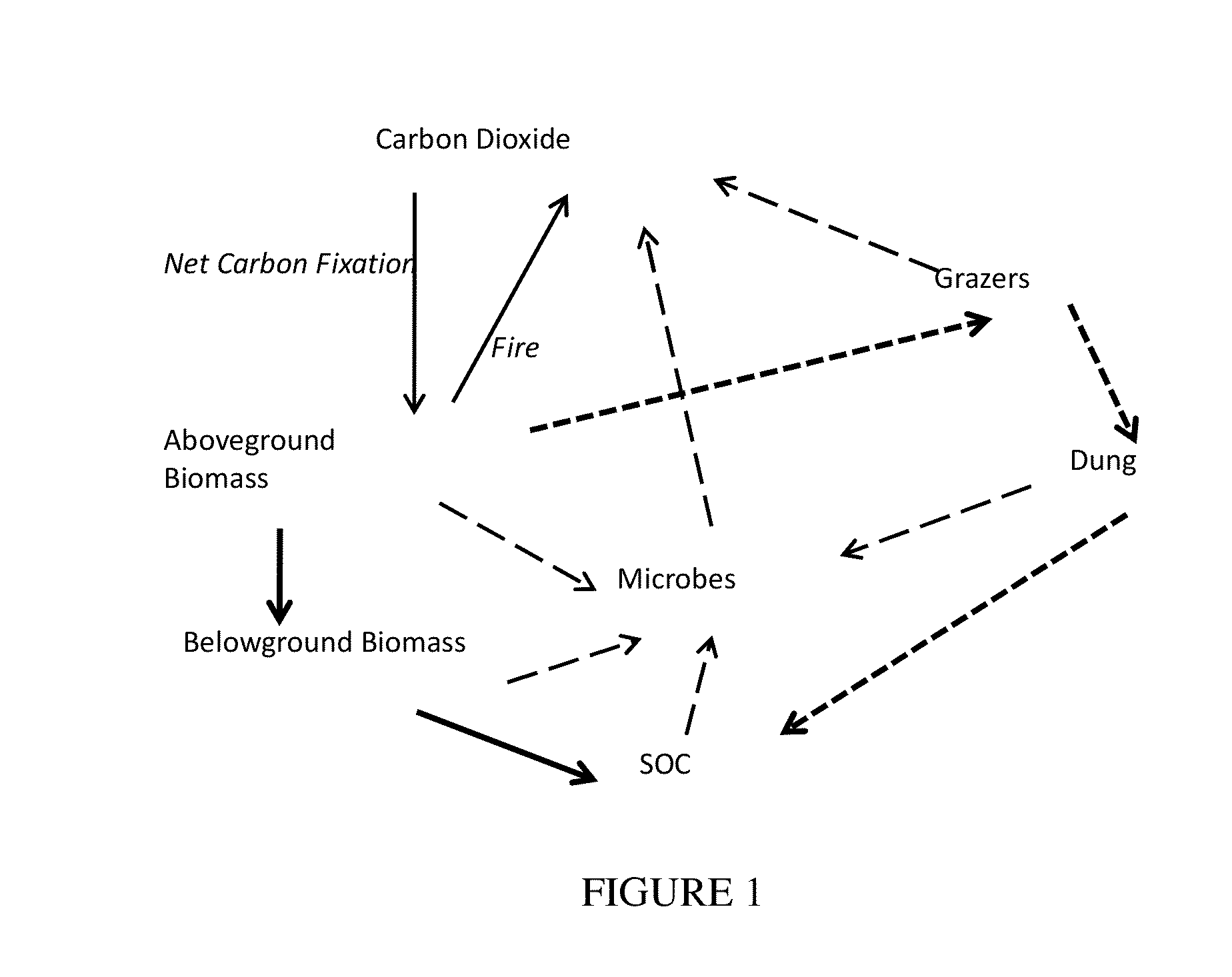Method for estimating carbon sequestration in grasslands
a grassland and carbon sequestration technology, applied in the field of accurate method for estimating carbon sequestration in tropical grassland, can solve the problems of large, complex, mostly successful model, and the dynamics of soc in response to changes in fire, grazing and other management in tropical systems are virtually unstudied, and the standing biomass is highly vulnerable to fire and often experiences fir
- Summary
- Abstract
- Description
- Claims
- Application Information
AI Technical Summary
Problems solved by technology
Method used
Image
Examples
Embodiment Construction
[0017]Referring now to the drawings, wherein like reference numerals refer to like parts throughout, there is seen in FIG. 1 a model of the major fates of carbon in tropical grassland considered by the present invention as part of a practical soil carbon dynamic model to allow for the estimation of soil organic carbon over time. Net fixed carbon becomes resident soil organic carbon (SOC) through two major pathways: plant-derived SOC not consumed by microbes (in soil or the guts of macro-decomposers like termites) (heavy solid arrows), and dung-derived SOC (heavy short-dashed arrows) not assimilated by grazers and gut or soil microbes. All other carbon is combusted through fire (black arrow), or respired by grazers and microbes in soil or the guts of macro-decomposers (long dashed arrows).
[0018]The method of the present invention is based on a number of observations about the SOC dynamics of tropical grasslands. First, tropical grasses exhibit compensatory responses to defoliation th...
PUM
| Property | Measurement | Unit |
|---|---|---|
| area | aaaaa | aaaaa |
| leaf area index | aaaaa | aaaaa |
| water holding capacity | aaaaa | aaaaa |
Abstract
Description
Claims
Application Information
 Login to View More
Login to View More - R&D
- Intellectual Property
- Life Sciences
- Materials
- Tech Scout
- Unparalleled Data Quality
- Higher Quality Content
- 60% Fewer Hallucinations
Browse by: Latest US Patents, China's latest patents, Technical Efficacy Thesaurus, Application Domain, Technology Topic, Popular Technical Reports.
© 2025 PatSnap. All rights reserved.Legal|Privacy policy|Modern Slavery Act Transparency Statement|Sitemap|About US| Contact US: help@patsnap.com



